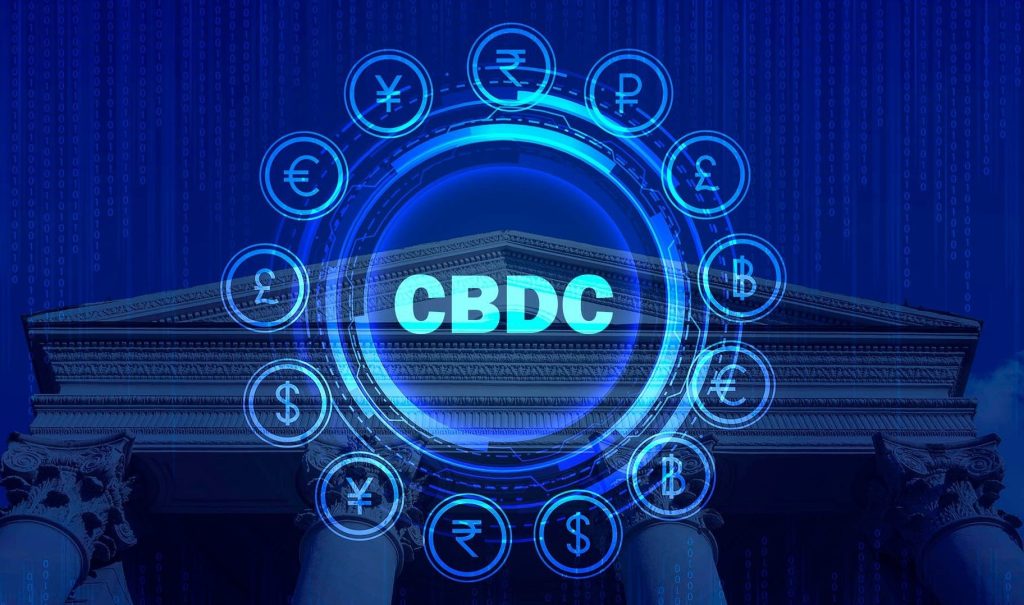If you’ve been paying attention to global financial trends in 2025, you’ve probably heard the buzz about Central Bank Digital Currencies (CBDCs). While crypto enthusiasts have long pushed for decentralized digital currencies like Bitcoin and Ethereum, central banks around the world are now creating their own version of digital money. And it’s not just a fad—CBDCs are becoming a real, tangible part of the global financial landscape.
But what exactly are CBDCs, and why should you care? Let’s break it down in simple terms and see how this digital revolution could affect you, your investments, and the future of money.
What Are CBDCs?
At its core, a CBDC is a digital version of your country’s regular money. Think of it as the digital equivalent of cash, but it’s issued and controlled by a central bank (instead of being managed by private institutions or decentralized networks).
So, unlike Bitcoin, which fluctuates in value and is based on a decentralized system, a CBDC would be stable, government-backed, and guaranteed to hold its value.
Here’s a quick rundown of the two main types of CBDCs:
- Retail CBDCs: These are designed for the public and would act just like regular money. You’d use them to make purchases, transfer funds, etc.
- Wholesale CBDCs: These are used for interbank transfers and help banks settle payments with each other.
In short, CBDCs are designed to modernize our current monetary system. They promise faster payments, lower transaction costs, and potentially greater financial inclusion—especially in places where access to banking is limited.
Who’s Already on Board with CBDCs?
Some countries are way ahead of others when it comes to CBDC development. Here’s a quick look at the most notable players:
- China’s e-CNY: The Chinese government has already been testing its digital yuan (e-CNY) in over 25 cities. It’s the most advanced CBDC so far, and China is integrating it into various public services—like using it for payments during the 2025 Lunar New Year.
- European Central Bank (ECB): The ECB is moving forward with the digital euro. A full rollout is expected around 2026, but 2025 will see more countries in the EU experimenting with its use.
- India: India’s digital rupee is already being tested by several banks, and the results so far are promising, especially in urban areas.
- United States: The U.S. has been a bit more cautious. There’s no official launch yet, but the digital dollar is actively being studied. Several private-sector pilot programs are underway to see how it could fit into the existing financial system.
Why Should You Care About CBDCs?
CBDCs could drastically reshape the way we think about money and how financial systems operate. Here’s why this matters to you:
- Faster and Cheaper Transactions: Cross-border payments are notoriously slow and expensive. But with CBDCs, money could be transferred instantly, with minimal fees. This could be a game-changer for businesses, international trade, and even people sending money abroad.
- New Financial Tools for Central Banks: Governments could use CBDCs to inject money directly into the economy—no more waiting for bank loans or stimulus checks. This opens up new ways of controlling inflation, responding to economic crises, and managing financial markets.
- Potential Impact on Traditional Banks: If consumers can hold money directly with a central bank, banks may lose some of their intermediary role. They’ll have to adapt to new models or face potential disruption. This could mean changes in how we save, invest, and borrow money.
- Greater Financial Inclusion: In many parts of the world, people don’t have access to banks. CBDCs could help bridge that gap by offering digital accounts to anyone with a smartphone or internet access. This would be huge for developing countries or regions with underbanked populations.
What Are the Risks and Challenges?
As much as CBDCs promise, there are some real concerns we need to consider:
- Privacy: One of the biggest issues is privacy. Unlike cash, which is anonymous, digital currencies could allow governments to track every transaction you make. This raises questions about surveillance and how much control central banks will have over individual spending.
- Cybersecurity: Digital currencies are only as secure as the systems that support them. What happens if a CBDC platform gets hacked or malfunctioned? The potential risks to the economy would be significant if these systems aren’t bulletproof.
- Disruption of the Banking System: While CBDCs could make payments more efficient, they might also disrupt traditional banking. If people can hold money directly in digital accounts with the central bank, commercial banks could lose a huge chunk of their deposit base, which might lead to changes in how banks operate and lend money.
What’s Next for CBDCs?
Looking ahead, 2025 could be a critical year for CBDCs. As more countries test and launch their digital currencies, we could see wider adoption of these systems—and maybe even a more unified global approach to digital money.
For businesses and investors, this means new opportunities (and risks). Fintech companies, payment processors, and cybersecurity firms are likely to see huge growth as CBDCs roll out. On the flip side, industries tied to traditional financial systems—like legacy banks or international money transfer services—might face pressure to innovate or risk becoming obsolete.
If you’re an individual investor, it’s important to keep an eye on these developments. Understanding how CBDCs could affect markets, currencies, and economic policy will be crucial to making informed decisions moving forward.
The Bottom Line
CBDCs are no longer just an idea or a theoretical concept—they’re becoming a reality. Whether you’re an investor, a business owner, or just someone curious about the future of money, it’s clear that the digital currency revolution is here.
How this plays out will depend on how quickly central banks can implement CBDCs, how they’re regulated, and how the public reacts to this shift in monetary control. One thing’s for sure: the world of money is changing fast, and 2025 might just be the year that digital currencies go from “what if” to “what’s next.”


